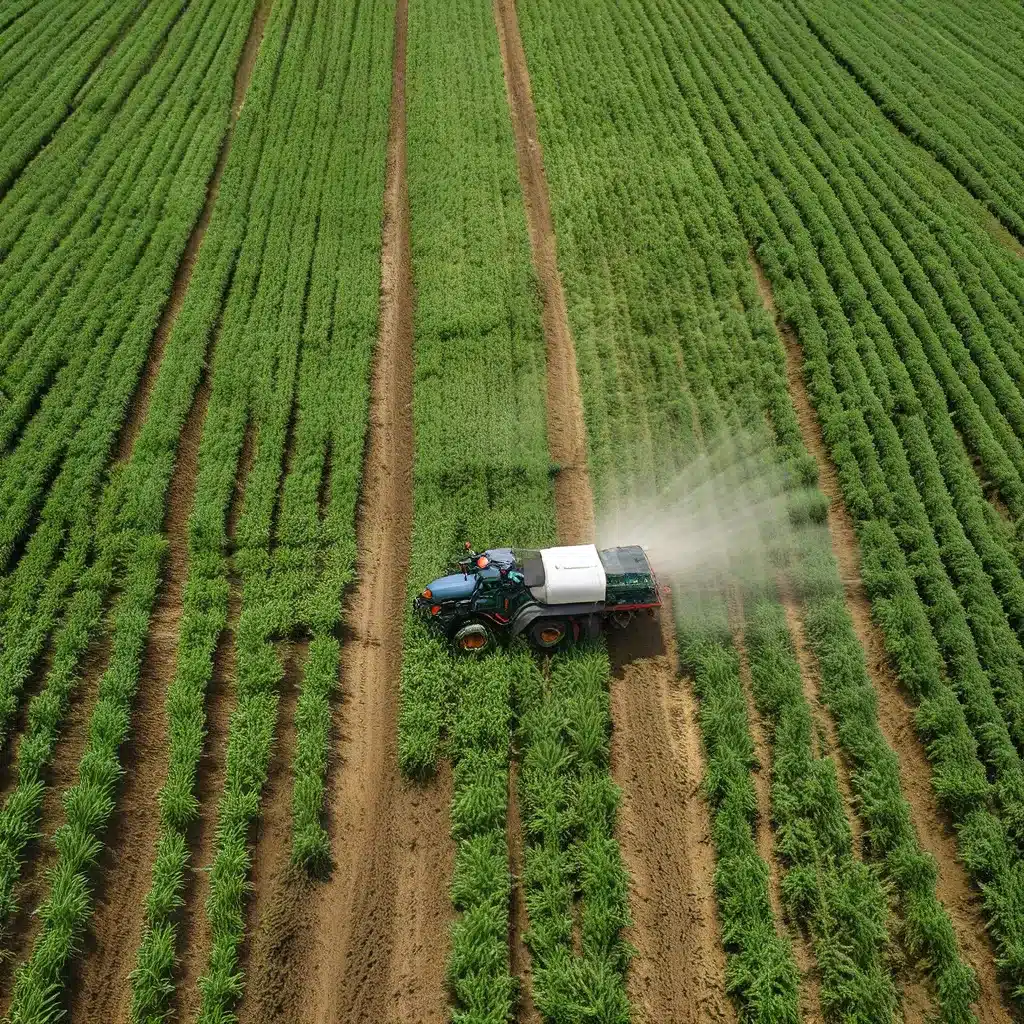
Precision Agriculture: Revolutionizing Farming with Sensor Networks
Precision agriculture is a farming management approach that leverages cutting-edge sensor technologies and data analytics to optimize agricultural practices. By strategically deploying sensor networks across farmlands, farmers can gather real-time insights about soil conditions, plant health, weather patterns, and resource utilization. This data-driven approach enables them to make informed decisions, leading to enhanced crop yields, efficient water management, and more sustainable farming practices.
At the heart of this precision agriculture revolution are IoT (Internet of Things) devices and wireless sensor networks. These innovative technologies allow farmers to closely monitor and respond to the dynamic needs of their crops, ultimately boosting productivity and reducing environmental impact. By integrating these sensor-enabled systems, farmers can achieve a level of precision and control that was previously unimaginable.
Sensor Network Design for Precision Agriculture
Designing an effective sensor network for precision agriculture requires a deep understanding of the unique challenges and requirements of the agricultural sector. Sensor network topology, data transmission protocols, and power management strategies play a crucial role in ensuring the reliability, scalability, and sustainability of these systems.
Precision agriculture often utilizes a combination of stationary sensors and mobile sensors to capture a comprehensive view of the farmland. Stationary sensors are typically deployed in a grid-like or cluster-based topology, monitoring parameters such as soil moisture, nutrient levels, and environmental conditions at fixed locations. Mobile sensors, often mounted on farm vehicles or drones, provide additional spatial coverage and enable real-time monitoring of crop health and development.
The selection of appropriate communication protocols is crucial for ensuring reliable and efficient data transmission within the sensor network. Common protocols used in precision agriculture include LoRaWAN, ZigBee, and Wi-Fi, each with its own strengths and trade-offs in terms of range, data rate, and power consumption. Carefully balancing these factors is essential to create a robust and energy-efficient sensor network that can operate reliably in the often-challenging agricultural environments.
Sensor-Enabled Monitoring and Decision Support
The wealth of data collected by sensor networks in precision agriculture enables farmers to make more informed decisions and optimize their farming practices. Soil moisture sensors, for instance, can help determine the precise water requirements of crops, allowing farmers to implement efficient irrigation strategies and reduce water waste. Similarly, nutrient sensors can provide insights into the optimal application of fertilizers, minimizing over-application and reducing the environmental impact.
Beyond monitoring individual parameters, the integration of data analytics and machine learning algorithms allows for the development of sophisticated decision support systems. These systems can correlate various sensor data, weather forecasts, and historical records to provide personalized recommendations for farmers. This could include guidance on planting schedules, pest management strategies, and yield optimization techniques.
Securing Sensor Networks in Precision Agriculture
As sensor networks become increasingly ubiquitous in precision agriculture, the security of these systems has become a critical concern. Malicious actors could potentially exploit vulnerabilities in the network to gain unauthorized access, disrupt operations, or even compromise the integrity of the sensor data.
To address these security challenges, precision agriculture stakeholders must adopt a layered approach that encompasses both physical security and digital security measures. Access control, encryption, and authentication protocols are essential for safeguarding the sensor network infrastructure and the sensitive data it generates. Intrusion detection systems and secure data management practices can further enhance the overall cybersecurity posture of the precision agriculture ecosystem.
Securing IoT devices in precision agriculture is particularly crucial, as these small, resource-constrained nodes can be vulnerable to various cyber threats. Strategies such as firmware updates, secure boot processes, and hardware-based security features can help mitigate these risks and ensure the reliability and trustworthiness of the sensor network.
Energy Management in Sensor-Enabled Precision Agriculture
One of the key challenges in deploying large-scale sensor networks for precision agriculture is the efficient management of energy consumption. Sensor nodes are often located in remote or hard-to-reach areas, making traditional power sources like electrical grids impractical. Implementing effective energy management strategies is crucial to ensure the long-term sustainability and scalability of these systems.
Energy-efficient sensor network design involves a combination of hardware and software optimizations. Low-power microcontrollers, energy-harvesting technologies, and duty-cycling techniques can significantly reduce the power consumption of individual sensor nodes. Additionally, wireless communication protocols that prioritize energy efficiency, such as LoRaWAN and ZigBee, can help minimize the energy demands of data transmission.
At the network level, data aggregation and hierarchical routing strategies can optimize the flow of information, reducing the overall energy consumption of the system. Edge computing and in-network processing techniques can also help minimize the need for long-distance data transmissions, further enhancing the energy efficiency of the sensor network.
Toward a Sustainable Future in Precision Agriculture
As the global population continues to grow, the demand for food production and resource management has become increasingly critical. Sensor-enabled precision agriculture offers a promising solution to address these challenges by leveraging advanced technologies and data-driven insights.
By seamlessly integrating sensor networks, IoT devices, and data analytics into farming practices, precision agriculture has the potential to revolutionize the way we approach agricultural production. From optimizing crop yields and water usage to enhancing sustainability and environmental stewardship, the advancements in this field hold immense promise for the future of global food security.
As the technology continues to evolve and become more widely adopted, it is crucial for the sensor networks and IoT community to collaborate with agricultural stakeholders, researchers, and policymakers. By fostering interdisciplinary partnerships and driving innovation, we can unlock the full potential of precision agriculture and create a more sustainable and resilient food system for generations to come.